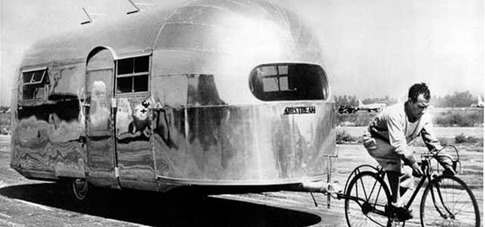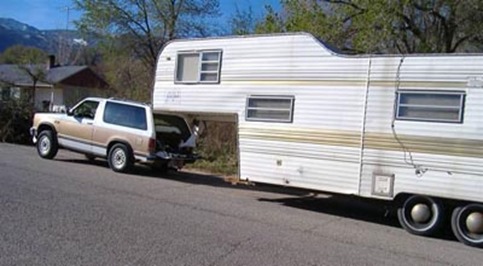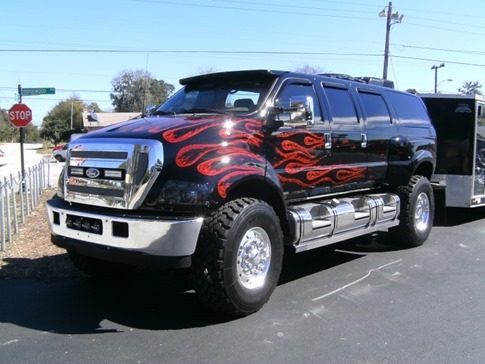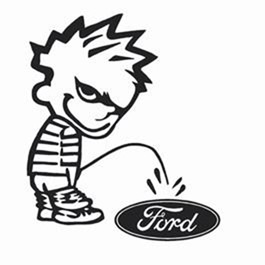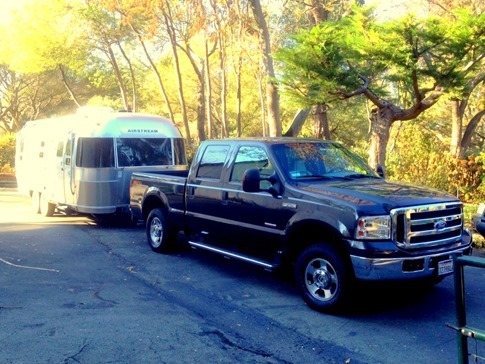In researching a new tow vehicle for our recently acquired 2005 25’ CCD Airstream, I spent a lot of time on the forums, both for each prospective truck and for Airstreams in general. I also reached out to a number of full-time (or close to it) Airstreamers for their thoughts. Unfortunately, there’s just not a clear answer. Discussion threads are equally inhabited by those who would say that today’s 1/2 ton pickups are so much more powerful than those of the past that they could easily handle a 25’, 6300 lb trailer and those who would claim that doing so would put not only one’s family but everyone else out on the road in grave danger. We talked to Airstreamers who’ve happily towed tens of thousands of miles with 1/2 tons and others who have upgraded to a 3/4 and say there’s no comparison.
You may remember that I did my best last year to convince myself I need one of these to bring home our latest batch of heritage piglets, but that wasn’t going to work here…
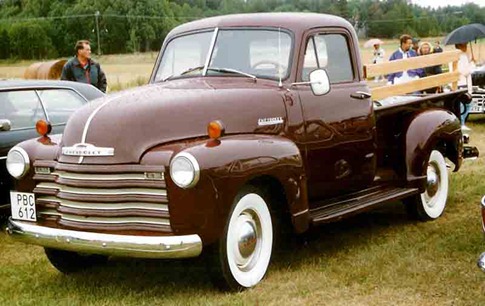
In making the choice, the issue is not typically tow rating, though there’s plenty of debate about how those numbers are derived. Instead it’s about payload. The term “1/2 ton truck” refers to the ability of early trucks to carry 1,000 lbs, one half of one ton. That number includes passengers, cargo and, depending on who you talk to, gasoline and other fluids. With most trucks that fall into that class today, payloads are listed closer to 1,500 lbs, although that also varies with trim levels (DVD players, leather seats, wood trim, moonroofs, etc all add weight to the truck). But things become really interesting when one starts to actually run the numbers on expected payload while towing.
The largest load comes from the trailer resting on the hitch, referred to as tongue weight. A very rough rule of thumb puts tongue weight at about 10% of trailer weight, although most agree that 15% is closer to reality for a fully loaded trailer “ready to camp.” In our case, we’re likely looking at a tongue weight in the 900 lb range. While a weight distributing hitch can transfer that weight off the rear axle, it still needs to be carried by the truck and therefore counts towards payload. In a modern 1/2 ton truck with a 1,500 lb payload, we’d be left with 600 lbs of capacity immediately after hitching up. Subtract two adults (300 lbs combined, but I’d rather not specify exact allocations), a baby and seat (50 lbs), Gorilla and some misc in the cab (another 50 lbs), and we’d only have 200 lbs left. Two 7 gallon water jugs at 56 lbs each and we’d be down below 100 lbs before even packing the generator, portable solar panel, DC fridge, tool kit, two bikes and a baby bike seat, the Bob stroller, Wynne’s tricycle, the Weber BabyQ, camp chairs, folding camp table not to mention some room for the family to grow. Oh, and that doesn’t even factor in the weight of the truck cap (another 200 lbs at least).
While there a few options to increase the payload up towards 2,000 lbs like Ford’s MaxPayload Package for the F150, it’s only available on newer models with the 6.5’ bed and is pretty hard to find. We’d not only be looking at a very expensive truck but one that’s just as long as a 3/4 ton and might still be over capacity. While it’s unlikely that the axles would snap the second we tossed another pound of frozen pork into the fridge, in the end, we decided that a 3/4 ton truck with a 6.5’ bed and around 2,900 lbs of payload would give us the ability to bring the things with us that we wanted while offering the confidence we were looking for while towing. Of course, the downside is that we’ll have a behemoth as a second car, and we may ultimately decide to get a cheap, fuel-efficient beater for the rare occasions Ann and I are not together. Then again, where we live out in the country, a 3/4 ton crew cab is basically considered a mid-size car.
New, these monsters cost over $50K, and that wasn’t going to happen. Used was the only option, and we started to familiarize ourselves with the offerings from the big three – Ford, Chevy/GMC and Dodge. Looking at a price range only a little more than what we figured we could sell our Sequoia for and with some luxuries (that we consider essential) like leather and 4x4, that put us somewhere around a 2004-2007 model year. If we were going with a 3/4 ton, it seemed we’d likely end up with a diesel, known for their torque and engine breaking, and that meant we were comparing the Powerstroke, Duramax and Cummins engines. Ask anyone who knows their stuff which diesel engine you definitely do not want to pick in those years and they’ll tell ya… Yup, that’s right, we picked that one, the 6.0L Powerstroke. Lemme ‘splain…
Soon after it was introduced in 2003 to improve emissions over the widely revered 7.3L Powerstroke, 6.0L owners started reporting problems that service centers were ill-prepared to deal with, eventually leading to hundreds of buybacks and lawsuits. Sand left behind from the process of casting the engine was clogging the tight passageways of the oil cooler. Coolant could no longer flow to the Exhaust Gas Recirculation coolers (EGR’s) which had been added to send uncombusted vapor back into the engine to improve emissions. Excessive heat was leading to EGR failures which leaked coolant and caused blown head gaskets. To make matters worse, low voltage in the Fuel Injector Control Modules (FICM’s) were causing injector failures and aftermarket performance chips which could unlock up to a hundred more horsepower were leading to “over-boost conditions” the engine couldn’t handle. A bit of a sh!tsh@w, huh? You wanna go out and buy one right away don’t you?
In fact, I had been scared away from this engine numerous times during our decision process but kept coming back to the fact that the ‘03-‘07 Ford F250 was really the only crew cab 3/4 ton in that price range with a good sized back seat and a decent looking interior. And when they ran, they ran great. In addition, these trucks are priced to reflect the bad reputation but can be “bullet-proofed” for less than this discount by addressing the well-known problems. North of $35K, we might have been able to find an ‘08 with the improved 6.4L, a reasonable number of miles and the features we wanted, but those seemed to have their own problems. Okay, the newer diesel engines also require ultra-low sulfur diesel, available from every diesel pump in the US but not on the trips to Baja with a truck camper I have somewhere in the back of my mind. Finally, and this was a bit of a big one for us while getting used to idea of driving a big truck around, the 6.0L is said to run perfectly on 100% biodiesel. While biodiesel has its issues – enough for their own blog post – it’s readily available in our area and something we’re interested in investigating.
And then the perfect truck showed up on one of the several Craigslist and dealer search windows I had open on the iPad. And it was just down the freeway about 30 minutes. And two guys were coming to look at it that evening (okay, that *might* have been a sales ploy to get me in there). And the dealership had a no strings attached 3 day no cost return policy. Sitting there in the immaculate tan leather drivers seat, scanning the unblemished head liner (which we’d been told is a great indicator of how a used vehicle has been treated) and hearing stories about how the older gentleman had come in to trade “his baby” for a small luxury SUV for his wife (okay, again, that could have been good salesmanship), I tried as hard as I could to find something wrong with it. A test drive sealed the deal. We’d driven several of these at this point and this was by far the tightest, best feeling, best sounding one yet. We signed the papers, opened the rear door for Gorilla to make the epic leap from the parking lot pavement up into her cavernous new back seat and drove our new 2006 F250 Lariat Crew Cab Shortbed Diesel home.
The next day, we hitched it up to the new trailer for a test tow. With Wynne’s seat securely mounted rear facing in the center position of the back bench, she could look directly out the back window and over the empty bed with absolutely no obstructions. “Ah! Home!” she said with an inflection of surprise when she saw the front of the trailer so close behind us.
Of course, she could have been looking at something else ‘cause when we started to pull forward with the trailer in tow, she threw up her hands, palms extended towards the back window in the universal sign for stop, and yelled “No! STAY!” at the tailgater as our new combo turned out of the driveway for the first time.

